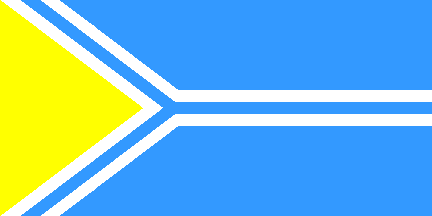The Blue Revolution
From Kaiserreich
The Blue Revolution is a term used to describe the civil uprising that took place in Mongolia in May 1926 in opposition to Ungern von Sternberg's rule. The uprising was primarily instigated by an alliance between intellectuals, Buddhist monks, and minority regional leaders in Mongolia. The bloody aftermath of the uprising proved to enforce Sternberg's rule even further.
Contents |
Blue Ideology
Supporters of the Blue revolution supported several referendums of change in Mongolia. They are shown as following:
- Democratization. This would mean that a national Khural, or parliament, would be elected to decide on national issues. Sternberg would still serve as Khaan, but with more limited abilities. The new system would be similar to the Kaiserreich system in Germany.
- Regional autonomy. Coupled with democratization, it would allow the local leaders greater say and allow for each region to chose a proper governor.
- Federation. The new Mongolia would be much more federalized among the regions, and be less focused in Urga.
Causes of the Revolution
In the period after the end of the Russian Civil War, Sternberg began building Mongolia into a centralized empire based out of Urga. To make sure taxes and other dues were properly paid, Sternberg appointed governors, typically ethnic Mongols, to watch over the provinces. Despite these general functions, the governors were usually left with only a small garrison to guard the province against dissent.
The weakness of the governors provided many of the local tribal leaders to band together against the bureaucracy without much hassle. Another group that was able to organize against the local governments were the local intellectuals, based primarily in the former Russian provinces along the Trans-Siberian Railroad and in Urga proper. Along with many local lamaseries as bases support, the groups eventually banded together to form a larger movement over the next couple of years. Many of the meetings took place in Kyzyl, a resistance stronghold. It was at one of these early meetings where they decided to call the movement the "Blue Movement", as symbolism for the purity of the blue waters and skies of the Mongolia, seeing Sternberg's rule as "muddying up" the nation.
Typically, the Blue Revolution was a movement of minority groups in Mongolia. Tuvans, Russians, Kazakhs, Buryats, and Altai Turks were primarily in support of the Blues. Despite this, some of the Khalkha Mongols of Outer Mongolia, primarily from the Urga area, supported the Blue agenda.
At the meeting in Kyzyl on April 15th of 1926, it was decided to have a massive display of dissent in May 3rd, with demonstrations in regional capitals across the country, and even in Urga itself, followed by a signed declaration of their proposals for change to be delivered to Sternberg himself.
The May 3rd Uprising
For the Blues, the demonstrations on the 3rd went off as planned, including having the declaration being sent to Sternberg. Sternberg responded quite harshly, sending the local garrisons in Urga to deal with the supporters, and then for all available troops to be violently deal with the other dissenters. Without a centralized, unified group controlling things, each major region had a different outcome.
Urga
While the Mongol government never released an official report on the casualties in Urga, it is estimated that there were at least fifty demonstrators killed, including five Buddhist monks and two Orthodox priests. The result of the clash between the army and demonstrators allowed around half of the revolters to escape successfully, including several who took it upon themselves to arm themselves and engage the troops in the street or as snipers. Fighting in Urga lasted for another two days in block-to-block sweeps of the city. An estimated seventeen soldiers were killed.
Ulan Ude
Of the revolts, the uprising in Ulan Ude was the most destructive. Starting out as a peaceful demonstration, the primarily Buryat Blues soon began attacking and looting Russian parts of the city. Soon after, even those who were non-Blue affiliates took to the streets to join the looting. It is unknown why the Buryat revolters chose not to resist further, but after the troops arrived, the dissenters scattered, and the city became peaceful under the watch of the local army in less than 24 hours after the revolt started. There were surprisingly few casualties.
Kyzyl
Of the revolts, the Tuvan revolt in Kyzyl was the most violent. Unlike the other Blue uprisings, the Kyzyl Blues were stuck on more of an agenda of Tuvan nationalism, and were not willing to protest peacefully. They were also much more organized, being under the command of Belek Ondar of Chadaana and Donduk Kuular and with specific goals of attack planned out. It was recorded that many ethnic Tuvans, Russians, and some Altai Turks that took to the streets were armed and organized into divisions. The immediate target of the Blue Tuvans was the Governors Palace, where they immediately killed his meagerly armed guards, found the governor hiding in his bedroom, and lynched him off of the balcony. The next place of importance was the Kyzyl armory, followed by the Kyzyl city hall. When government troops arrived two days later, the rebel forces met the armies in house-to-house fighting that lasted three days. By then, those who had not fled or died, barricaded themselves in the armory and city hall. The city hall fell in five more days in a bloody assault by government troops, and the armory in another seven. Both Ondar and Kuular were never found, expected to have fled towards the end of the siege and seeking refuge amongst the Tuvan tribes. Its estimated that 450 Blues and other citizens died in Kyzyl, and around 375 soldiers were killed in the fighting.

